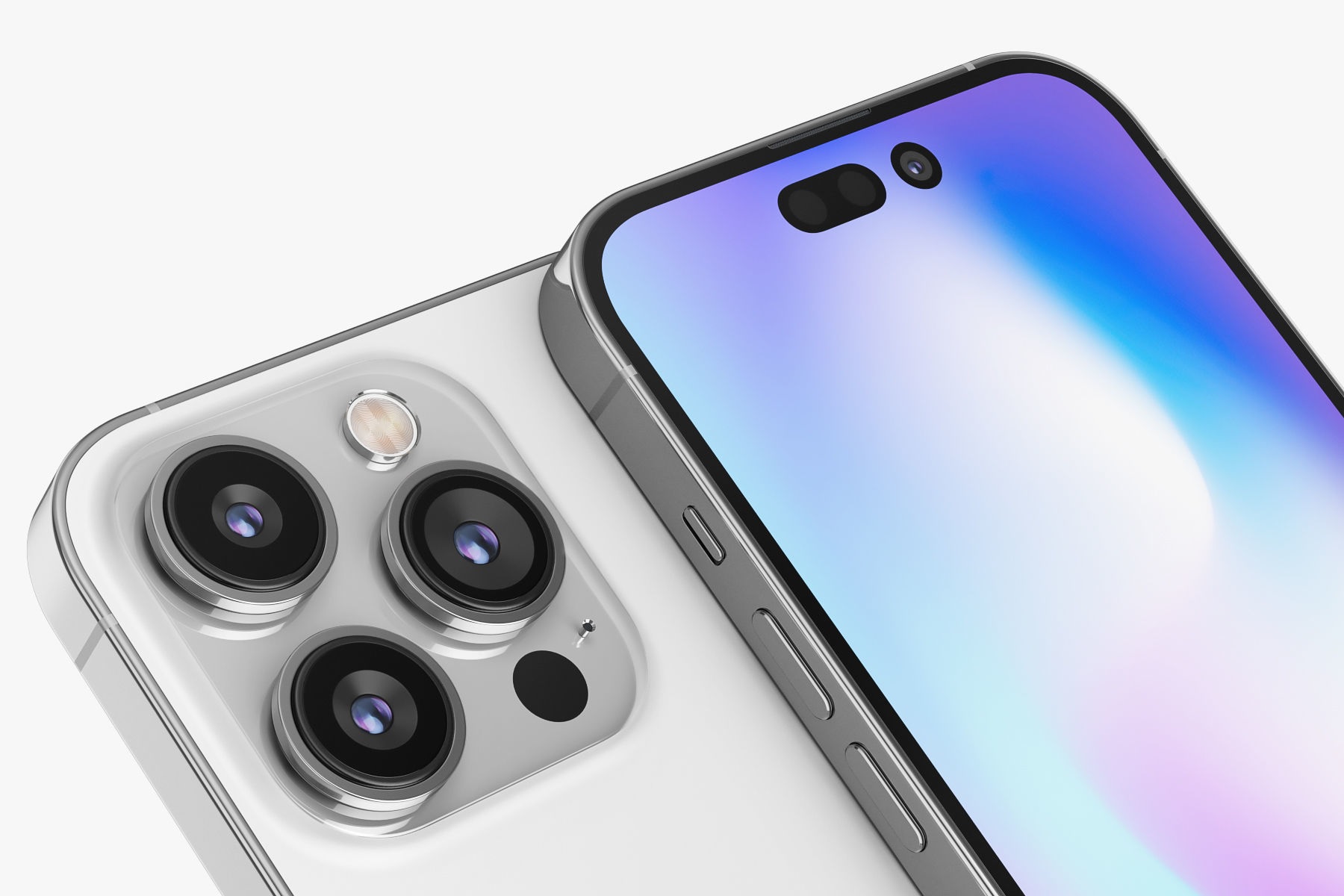When Apple introduces a new iPhone every fall, you’ve generally been able to count on the fact that the new phone, whatever the model, is going to feature the company’s latest mobile silicon. And given the edge Apple enjoys with its chips over rival phones, picking up any new iPhone means you’re getting one of the best phones for performance, whether you grab the tiniest iPhone mini or the mightiest iPhone Pro Max. Naturally, you’d think an A16 Bionic vs. A15 Bionic transition for this fall’s handset release would mean the same thing.
But that may not be the case with the iPhone 14 launch. For the first time ever, Apple is rumored to be using different chips for its different phones. Rumors suggest the newer A16 Bionic will power the iPhone 14 Pro models — the 6.1-inch iPhone 14 Pro and the 6.7-inch iPhone 14 Pro Max. The less expensive new iPhones coming this fall will instead use a variation of the A15 Bionic chip Apple introduced as part of the iPhone 13 release in 2021.
It’s a big change, if true. And it makes an A16 Bionic vs. A15 Bionic comparison more relevant than ever.
Apple keeps a pretty tight lid on all its new hardware announcements, chipsets included, so we’re unlikely to know all the A16 Bionic details until the iPhone 14 release date, currently rumored for September. Still, it’s helpful to look to rumors about the upcoming chipset and what it should deliver, as knowing the A16 Bionic vs. A15 Bionic differences might influence which iPhone model you ultimately buy.
Put another way, if a different processor for the iPhone 14 Pro is going to give it a big performance boost over the less expensive iPhone 14, that’s something you may want to start saving for now.
Until we get more definitive details, here’s how an A16 Bionic vs. A15 Bionic comparison is shaping up, and what it means for the iPhones that are arriving this fall.
A16 Bionic rumors
According to rumors, the A16 will be built on the same 5-nanometer process as the A15 Bionic system-on-chip featured in the iPhone 13 models.
At this point in the iPhone 14 rumor cycle, it’s well-established that the iPhone 14 Pro models are likely going to be the only ones to benefit from an entirely new chip. Rumors began circulating earlier this year about the A16 Bionic’s exclusivity, with respected analyst Ming-Chi Kuo as one of the primary sources behind the speculation. At this point, it feels like a done deal.
According to Kuo, the A16 will be built on the same 5-nanometer process as the A15 Bionic system-on-chip featured in the iPhone 13 models. Since the A14 Bionic also used a 5nm process, this will be Apple’s third year of turning to 5nm chips. That doesn’t leave a lot of headroom for big performance gains from the new silicon that you generally see when chip makers move to a smaller process.
Still, you would expect some gains to be had over last year’s chipset. When unveiling the A15-powered iPhone 13 models last fall, Apple didn’t offer a performance comparison between its new silicon and the A14 Bionic chipset before it, but an Anandtech study (opens in new tab) found that the A15 performed substantially better than its predecessor.
The A16 is likely to repeat the A15 Bionic’s 6-core CPU (two high-performance cores aided by four-efficiency cores). The A15 GPU featured a different number of cores depending on which phone you got — the iPhone 14 and iPhone 14 mini had a chipset with a 4-core GPU while the Pro models benefitted from an extra core. (Make a note of that — it’ll be important when we talk about the iPhone 14.) You’d expect the A16 Bionic to at least keep that 5-core GPU unless Apple tries to add another core to further boost graphic performance.

There’s other ways for Apple to give performance a boost with the A16 Bionic. It’s widely believed that the iPhone 14 Pro will switch to LPDDR5 RAM, an upgrade over the LPDDR4x memory current iPhones use. That would mean an increase in memory bandwidth and speedier RAM. (Again, that’s an upgrade rumored to be passing over the standard iPhone 14.)
Other changes to the A16 Bionic chip over its predecessor could be a faster neural engine and improved image signal processor — the latter would certainly be needed if rumors of a 48MP main camera in the iPhone 14 Pro models prove to be true. Some are also anticipating a bigger chip so that Apple can increase the number of transistors from the 15 billion that were included onto the A15 Bionic.
What does all that mean in terms of performance expectation. GSMArena (opens in new tab), compiling reports from different sources including Macworld (opens in new tab) and Digitimes (opens in new tab), came up with a 15% improvement in CPU speeds and 25% to 30% faster graphics for the A16 Bionic over the A15 Bionic.
iPhone 14 and the A15 Bionic
So that leaves the iPhone 14 and another phone — reportedly the iPhone 14 Max — making do with last year’s chipset. Of course, when the rumors suggest that those two phones will feature the A15 Bionic, they don’t mean the same chipset powering the iPhone 13 and iPhone 13 mini.

Rather, the idea would be that the iPhone 14 “graduates” to the A15 Bionic that the iPhone 13 Pros use. That’s the one with the 5-core GPU. If Apple equips the iPhone 14 with 6GB of RAM like the iPhone 13 Pro had — the iPhone 13 features 4GB — that would also give the new phone’s performance a nudge.
Put another way, you’d expect that an A15 Bionic-powered iPhone 14 would see a performance improvement over the standard iPhone 13 model, even if the gap widens between the iPhone 14 vs. the iPhone 14 Pro, though some observers argue that kind of gap wouldn’t be as big a deal as you might think.
The biggest lingering question, then, is what Apple would call this chipset inside the iPhone 14. Referring to it as last year’s chip might be a hard marketing sell for getting people excited about the new phone. Apple could add something to the chipset’s name to distinguish it from the A15 Bionic, though a more likely solution is that the company brands the older chipset as an A16 Bionic and attaches a Pro modifier to the name of the silicon inside the iPhone 14 Pros. For now, we’ll continue to distinguish these two chipsets as the A15 and A16 just to keep things straight.
A16 Bionic vs. A15 Bionic: Will it matter?
Whatever Apple ends up calling its chipsets, it’s extremely likely the one powering the iPhone 14 Pro is going to be faster. That in itself would be a departure from iPhones of the recent past, which generally turn in comparable performance, give or take the RAM Apple includes in each phone.
In that sense, then, an A16 Bionic vs. A15 Bionic divergence would matter, though not as much as the other changes Apple has planned for its Pro phones. Besides that 48MP camera upgrade, the new Pro models are likely to lose the notch from their display; they should also continue to have fast-refreshing displays, a feature that is likely to once again pass the standard iPhone by. Those differences seem far more significant than whatever boost in performance the A16 is likely to offer, though having that extra processing oomph is certainly going to be a mark in the iPhone 14 Pro’s favor.
We’ll get the full story when Apple finally unveils its phones. But for now, the A16/A15 distinction sounds like just another way that Apple is separating its Pro phones from the rest of its iPhone lineup.
For all the latest Technology News Click Here
For the latest news and updates, follow us on Google News.
